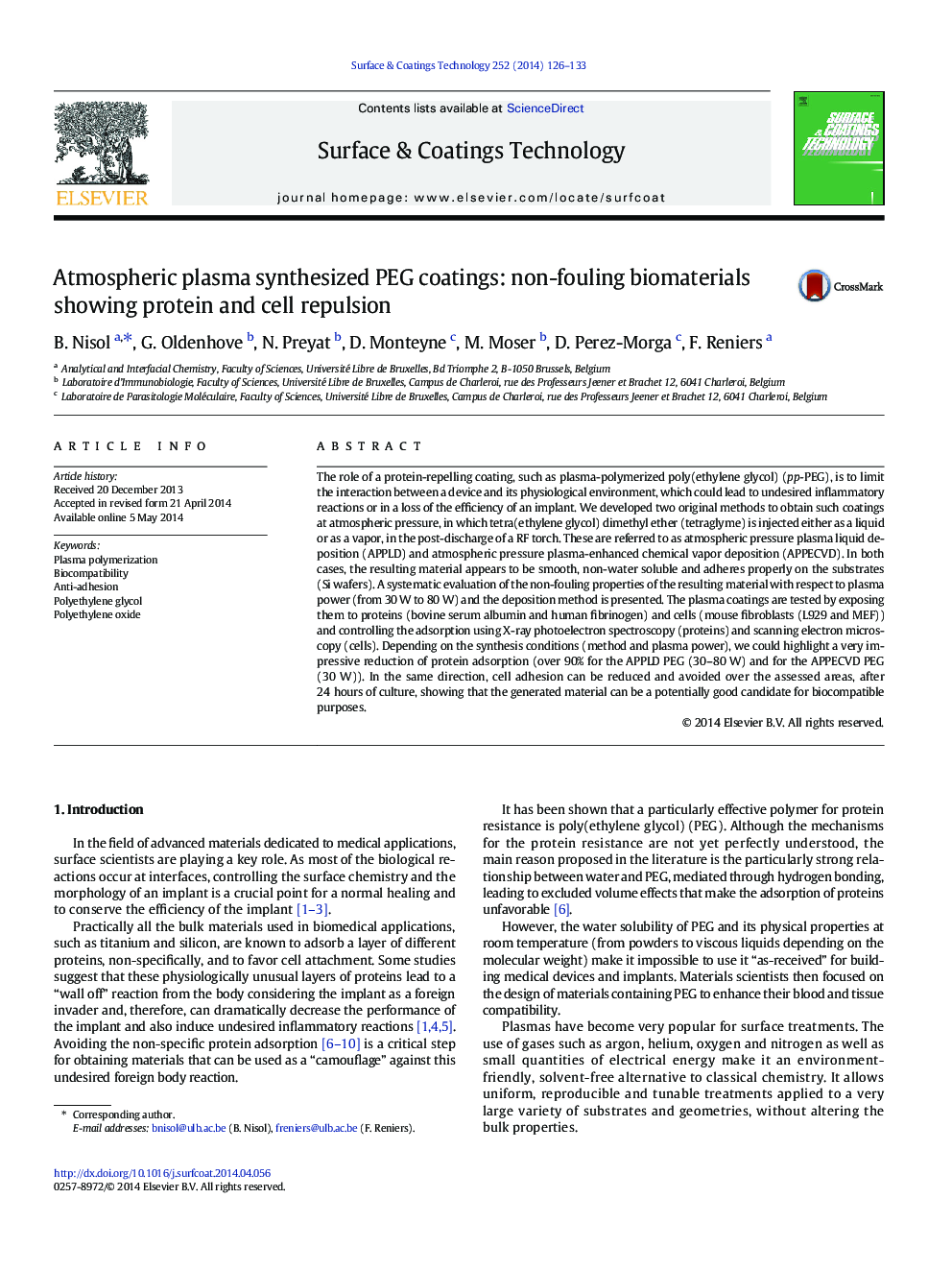| کد مقاله | کد نشریه | سال انتشار | مقاله انگلیسی | نسخه تمام متن |
|---|---|---|---|---|
| 1657487 | 1517626 | 2014 | 8 صفحه PDF | دانلود رایگان |

• Original atmospheric pressure plasma synthesized anti-biofouling coatings are tested.
• The coatings are really efficient to repel proteins and cells.
• The correlation between chemistry and anti-biofouling is clearly highlighted.
• Anti-biofouling character can be tuned by plasma parameters.
• The coatings are definitely good candidates for applied systems.
The role of a protein-repelling coating, such as plasma-polymerized poly(ethylene glycol) (pp-PEG), is to limit the interaction between a device and its physiological environment, which could lead to undesired inflammatory reactions or in a loss of the efficiency of an implant. We developed two original methods to obtain such coatings at atmospheric pressure, in which tetra(ethylene glycol) dimethyl ether (tetraglyme) is injected either as a liquid or as a vapor, in the post-discharge of a RF torch. These are referred to as atmospheric pressure plasma liquid deposition (APPLD) and atmospheric pressure plasma-enhanced chemical vapor deposition (APPECVD). In both cases, the resulting material appears to be smooth, non-water soluble and adheres properly on the substrates (Si wafers). A systematic evaluation of the non-fouling properties of the resulting material with respect to plasma power (from 30 W to 80 W) and the deposition method is presented. The plasma coatings are tested by exposing them to proteins (bovine serum albumin and human fibrinogen) and cells (mouse fibroblasts (L929 and MEF)) and controlling the adsorption using X-ray photoelectron spectroscopy (proteins) and scanning electron microscopy (cells). Depending on the synthesis conditions (method and plasma power), we could highlight a very impressive reduction of protein adsorption (over 90% for the APPLD PEG (30–80 W) and for the APPECVD PEG (30 W)). In the same direction, cell adhesion can be reduced and avoided over the assessed areas, after 24 hours of culture, showing that the generated material can be a potentially good candidate for biocompatible purposes.
Journal: Surface and Coatings Technology - Volume 252, 15 August 2014, Pages 126–133